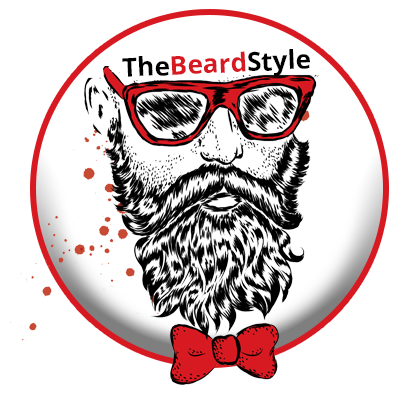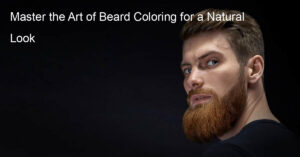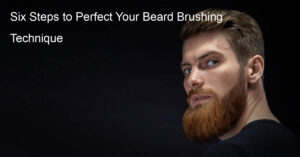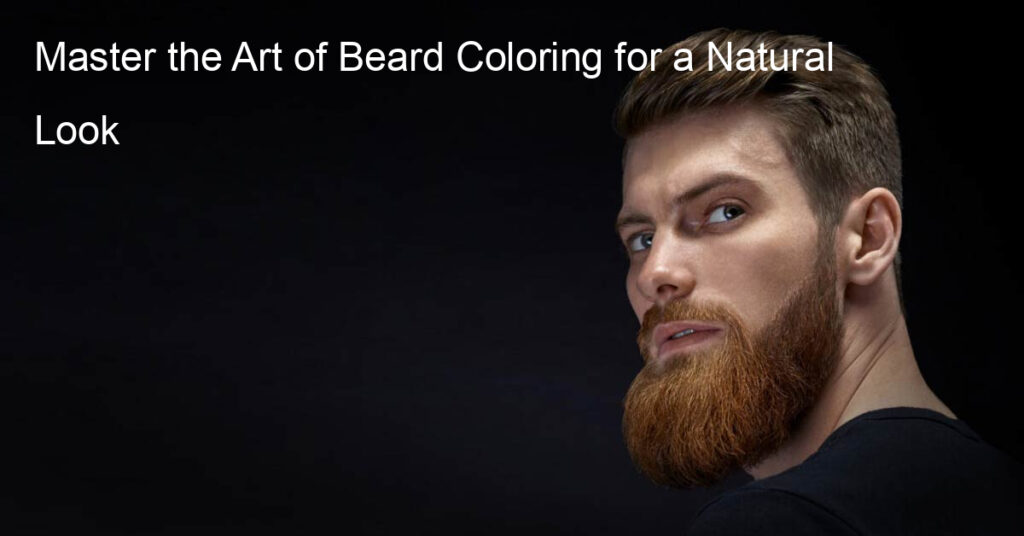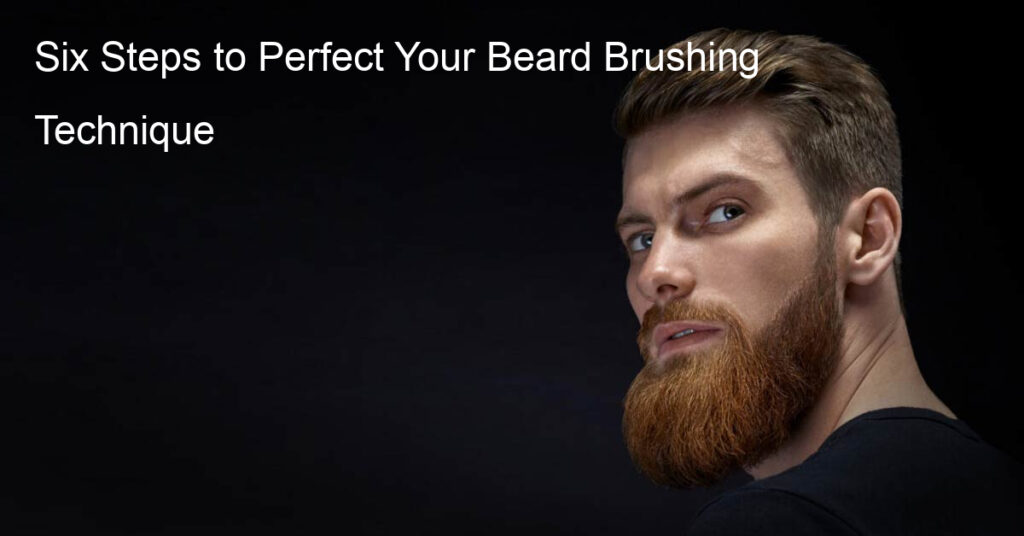Dyeing your beard can be a fun and exciting way to change your appearance or simply cover up those pesky gray hairs.
Before you dive into the world of beard dyeing, though, it’s essential to understand how to dye your beard, the basics, and prepare your facial hair to achieve the best results.
From choosing the right dye to taking care of your newly colored beard, you’ll want to be well-informed and ready to tackle this grooming procedure.
To begin your beard dyeing journey, assess the health of your facial hair and ensure it’s in good condition. A healthy beard will better absorb the dye, leading to a more vibrant and long-lasting color.
Once you’ve determined that your beard is ready for dyeing, it’s time to choose the right color and type of dye to achieve your desired look, keeping in mind factors like your natural hair color and skin tone.
Key Takeaways
- Understand the basics of beard dyeing, including preparation and product selection.
- Assess your beard’s health to ensure optimal dye absorption and long-lasting color.
- Learn the steps to dye your beard and care for it afterward to maintain a vibrant color.
How To Dye Your Beard
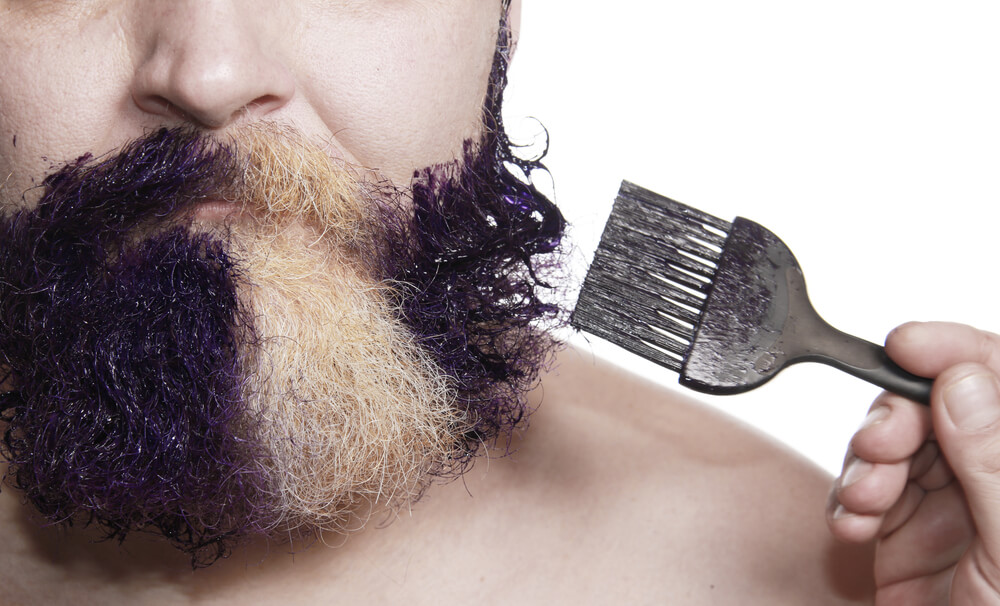
Dyeing your beard can be a great way to enhance your appearance or cover up gray hair. To get started, you need to choose a beard dye color that matches your natural hair color.
It is essential to select a shade that complements your skin tone and beard length.
Before you begin dyeing, make sure to clean your beard thoroughly using a beard shampoo. Having a clean beard allows the dye to penetrate the hair shaft evenly. Pat your beard dry with a towel after washing.
Additionally, consider doing a patch test 24 hours prior to application to ensure you don’t have any adverse reactions to the product.
When applying the dye, you’ll typically need to mix the color components according to the instructions on the kit. Wear gloves to avoid staining your hands. Using a brush or comb that comes with the kit, start at the roots and continue applying the dye to your beard.
Comb through your beard after applying the dye to ensure an even distribution.
It is important to have a mirror at hand to check your progress while dyeing your beard.
This will help you avoid missing any spots and get the desired coverage. Once the dye is applied, you need to wait for the recommended processing time indicated in the instructions.
Lastly, after the processing time is complete, rinse your beard thoroughly with warm water until the water runs clear. This prevents any residual dye from irritating your skin. Follow up with a beard conditioner to keep your beard soft and manageable.
By understanding the basics of beard dyeing, you can achieve the look you desire and maintain a well-groomed appearance.
Assessing Your Beard’s Health
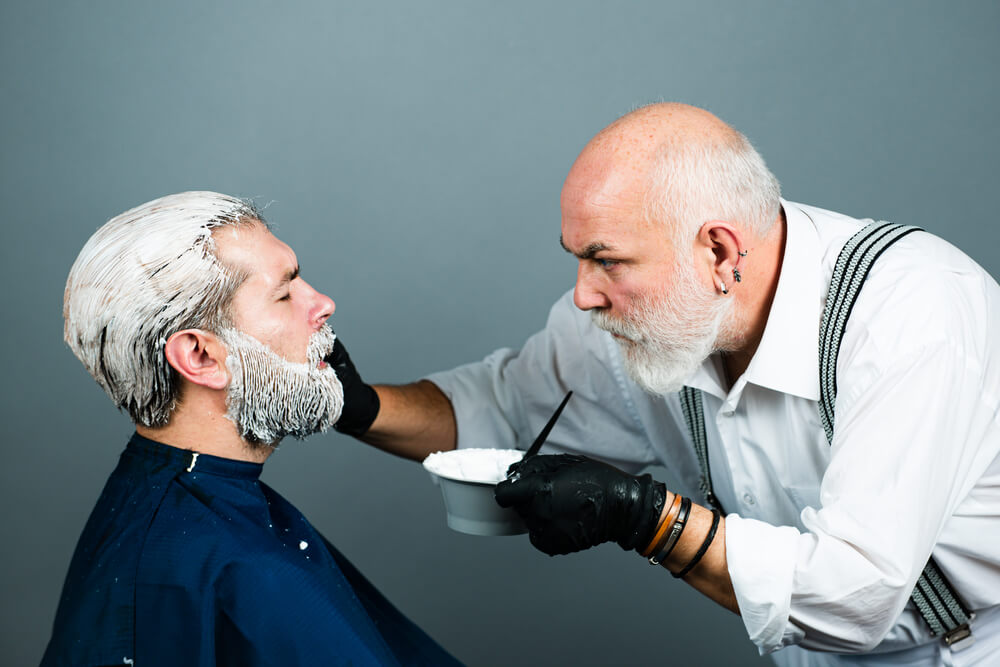
Before you decide to dye your beard, it’s essential to evaluate its health. A healthy beard will absorb and retain the dye more effectively, ensuring a more uniform and natural look.
Here are some key indicators to consider when assessing your beard’s health:
Firstly, observe the texture and density of your beard. Healthy facial hair should feel soft and smooth to the touch, with minimal to no breakage. Be mindful of any brittleness, thinning, or patchiness, as these could be signs of an unhealthy beard.
Ensure that you have at least an inch of growth before dyeing to maximize the effectiveness of the dye and make it easier to apply.
Another important aspect to consider is your beard’s moisture levels. A well-hydrated beard is less prone to breakage and will hold the dye better. Make sure you regularly moisturize your beard using beard oils or balms to maintain optimal hydration.
If your beard feels dry or frizzy, consider addressing these issues before attempting to dye it.
Additionally, pay attention to your grooming habits. Proper grooming techniques promote a healthy beard and will set a strong foundation for successful dyeing.
Comb or brush your beard daily to detangle it, stimulate blood circulation, and distribute natural oils evenly throughout your facial hair. You should also trim any split ends and shape your beard as desired before dyeing for improved results.
Lastly, ensure that your skin beneath the beard is healthy and irritation-free. If you’re experiencing issues such as dryness, itchiness, or redness, it’s essential to resolve these problems before applying dye to avoid exacerbating any potential skin issues.
Utilize appropriate skin products like beard washes and moisturizers, and consider consulting with a dermatologist if necessary.
Taking these factors into account, you’ll be better prepared for a successful beard dyeing experience.
By making sure your beard is healthy, you can confidently apply dye and achieve the natural-looking color you desire.
Choosing the Right Dye for Your Beard
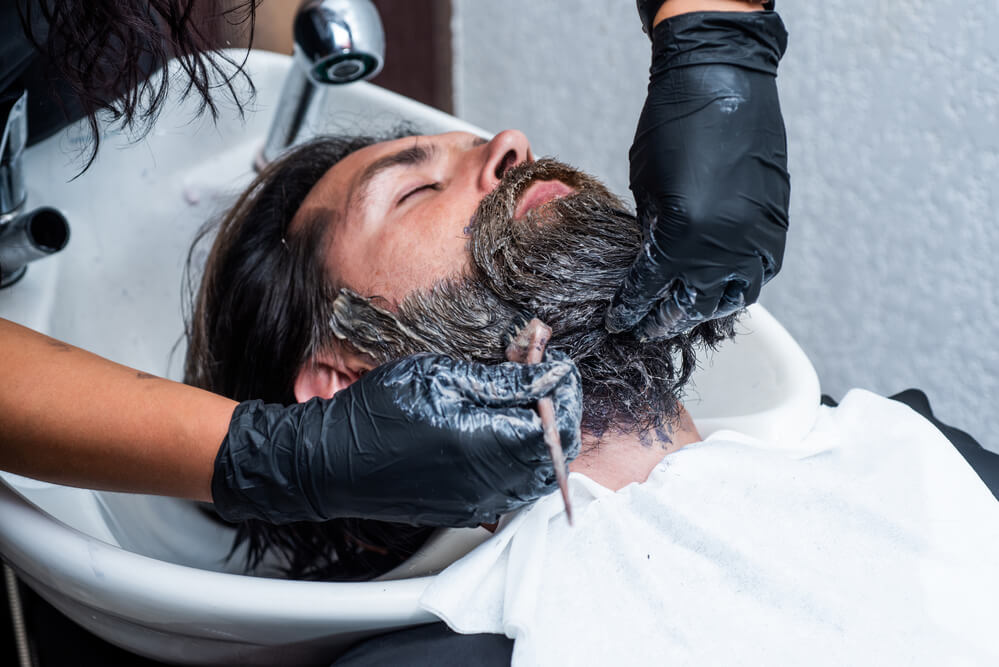
When it comes to dyeing your beard, choosing the right dye is crucial. You want to pick a color and type of dye that suits your needs and complements your skin tone and natural hair color.
This section will discuss choosing a dye based on the desired tones and whether you prefer a temporary or permanent color.
For Natural Tones
If you’re looking to maintain a natural appearance, opt for a dye that closely matches your natural hair color. Choose between warm and cool tones based on your skin’s undertones.
People with warm undertones should look for dyes with golden or reddish hues, while cool undertones are better suited for neutral or ashy colors.
Keep in mind that it’s better to go slightly lighter rather than darker when selecting a natural tone to ensure a seamless blend.
For Vibrant Tones
If you’re after a more adventurous look, vibrant colors like blues, purples, or greens can be a fun way to change things up. When selecting a bold shade, consider your skin tone and the level of maintenance required. Some colors may fade faster than others or require more frequent touch-ups.
You may also want to test a strand of hair before full application to confirm that the chosen color matches your expectations.
For Temporary or Permanent Dye
Finally, consider the longevity of the dye while making your decision. Temporary dyes typically last a few days up to a month, while permanent dyes can last anywhere from four to six weeks.
Temporary dyes are easy to wash out and allow for more experimentation. On the other hand, permanent dyes are better suited for those seeking longer-lasting results and less frequent upkeep.
Remember to follow the instructions on the dye packaging and perform a patch test to prevent any skin irritations and achieve the best results.
Preparation Required Before Dyeing
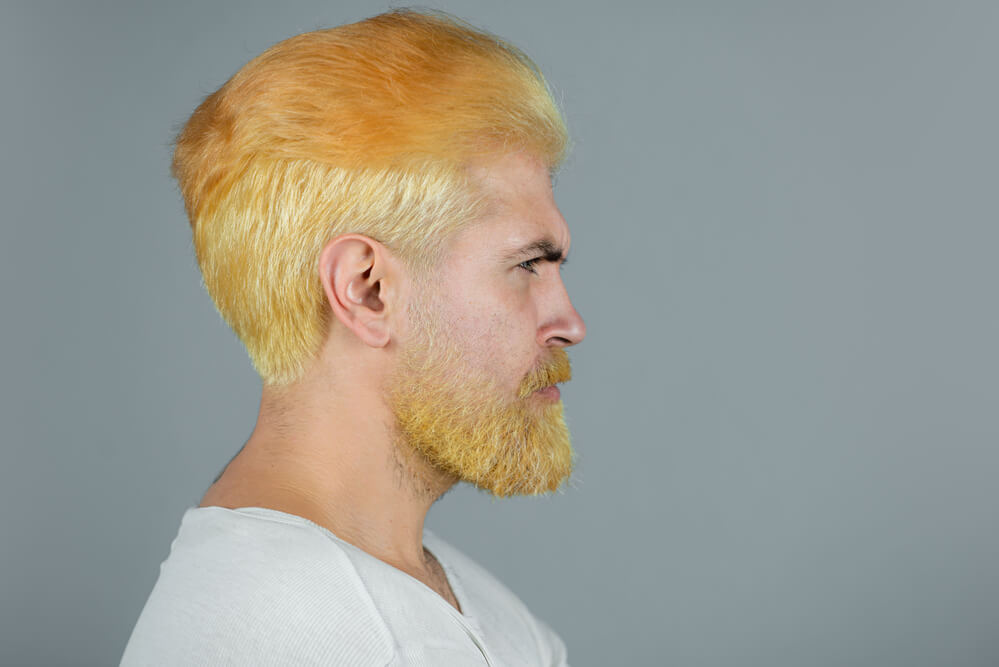
Gathering Your Supplies
Before you start the process of dyeing your beard, you need to gather all the necessary supplies.
These typically include a beard dye of your preferred color, a mixing bowl and applicator brush, gloves to protect your hands, a towel or cape to protect your clothes, and petroleum jelly or barrier cream to protect the surrounding skin.
It is essential that you carefully read the instructions provided with your chosen beard dye to ensure you have everything needed for the dyeing process.
Protecting Your Skin
When dyeing your beard, it’s crucial to take measures to protect your skin from stains and potential irritation. To do so, follow these steps:
- Apply a barrier cream or petroleum jelly: Apply a thin layer of either a barrier cream or petroleum jelly around the perimeter of your beard. This will help prevent the dye from staining your skin and ease cleanup after the dyeing process.
- Wear gloves: To protect your hands, always wear gloves when handling and applying the beard dye. This will not only keep your hands stain-free but also prevent any potential skin reactions.
- Prepare your workspace: Choose a well-ventilated area with a sink close by for easy cleanup. Cover any surfaces that may be stained by the dye with newspapers or towels.
By following these steps and gathering the essential supplies, you’ll be well-prepared to dye your beard confidently, accurately, and safely.
Make sure to always follow the instructions provided by your chosen beard dye product to achieve the best results.
Steps to Dye Your Beard

Applying the Dye
First, choose a beard dye that matches your natural color. Put on gloves to protect your hands and apply a thin layer of petroleum jelly on the skin around your beard to prevent staining.
Mix the dye according to the manufacturer’s instructions, and then use a brush or applicator to apply the dye to your beard, making sure to cover all the hairs evenly.
Waiting for the Dye to Set
Allow the dye to sit on your beard for the recommended amount of time, which is typically 10-15 minutes, but always follow the specific instructions provided by the beard dye product you’re using.
This will give the dye enough time to penetrate your beard hair and achieve the desired color.
Rinsing Off
Once the waiting time has passed, rinse off the dye using lukewarm water. Gently massage your beard while rinsing to ensure all the dye is removed. After rinsing, pat your beard dry with a clean towel. Make sure to thoroughly wash your hands and any tools used during the application process.
Also, you can use a beard shampoo and conditioner to help maintain the health of your dyed beard.
Remember to follow these steps carefully and always refer to the specific product’s instructions for the best results.
Post-Dyeing Care Tips
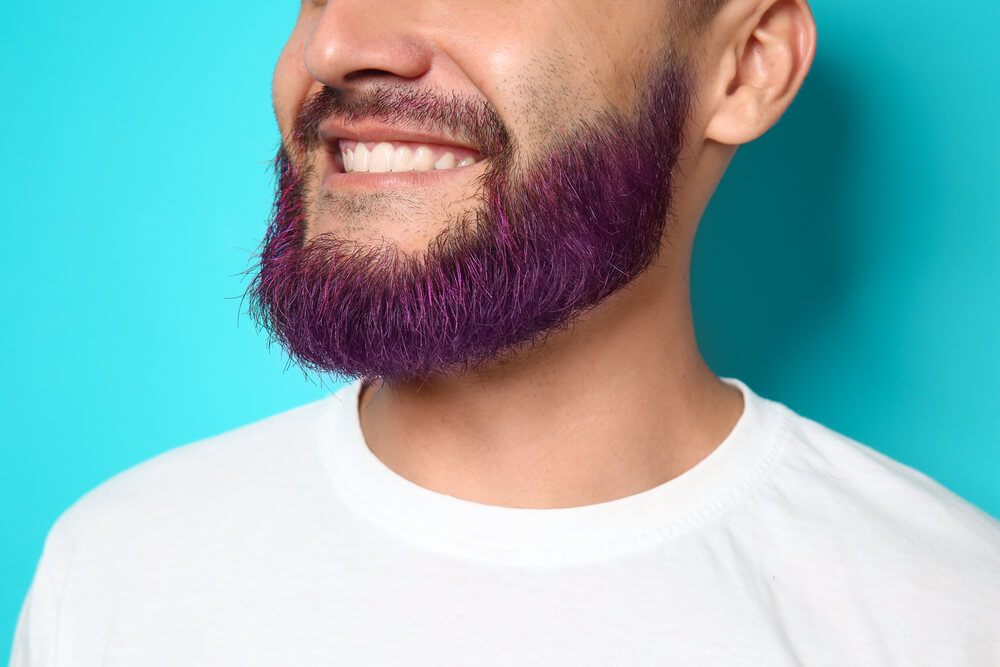
After dyeing your beard, it’s essential to take proper care of it to maintain the color and keep your facial hair healthy.
Here are some useful post-dyeing care tips that will help you achieve the best results.
Using Beard Oil
Incorporating a high-quality beard oil into your daily routine can significantly benefit your newly dyed beard. It nourishes your facial hair, providing essential hydration while also helping to lock in the color.
To apply beard oil, pour a few drops into your palms, rub them together, and gently massage the oil into your beard. Focus on both the hair and the skin underneath, ensuring even distribution.
Incorporating beard oil into your routine will result in a softer, healthier, and more vibrant beard.
Investing in Beard Shampoo
A color-safe beard shampoo is essential for maintaining your dyed beard. Regular shampoos can be too harsh on facial hair and might strip the color from your beard, so opt for a beard-specific shampoo that’s designed to protect your color and keep your beard soft, clean, and healthy.
Use the shampoo according to the product instructions, usually 2-3 times a week, to keep your beard clean and vibrant.
Remember, post-dyeing beard care is crucial for maintaining your beard’s color and overall health.
By using beard oil and investing in a beard shampoo, you’re ensuring your dyed beard remains looking its best for as long as possible.
Potential Issues and Their Solutions

When dyeing your beard, you may encounter some problems.
This section will help you identify potential issues and provide solutions to ensure a successful beard dyeing experience.
Issue: Choosing the wrong color Selecting the correct beard dye color is essential, as the wrong shade may not produce the desired results. To avoid this issue, choose a color that matches your natural hair color or is one shade lighter.
Solution: Test the dye on a small section of your beard before applying it to the entire area. This will give you an idea of the actual color and help prevent any unwanted results.
Issue: Skin irritation Some people may experience skin irritation after using beard dye. According to Healthline, you can mitigate this issue by taking a few precautionary measures.
Solution: Perform a patch test 24-48 hours before applying the dye to your beard. Apply a small amount of dye on your forearm and wait for the specified time on the product’s instructions. If you don’t experience any allergic reaction, you can proceed with dyeing your beard.
Issue: Uneven dye application Improper application of beard dye can result in patchy or uneven color. To avoid this, follow the instructions carefully and ensure even coverage.
Solution: Use a brush or applicator specifically designed for beard dyeing to ensure even application. Start with a small amount of dye and gradually build up the color, taking your time to thoroughly coat each hair.
Issue: Dye stains on skin Dye may sometimes accidentally stain your skin during the dyeing process. The solution involves using a few common household items.
Solution: Soak a cotton ball with rubbing alcohol and dab the stained skin until the dye is gone. Wash the area with soap and water, and then apply coconut oil to moisturize and reduce irritation.
By being aware of these potential issues and their solutions, you can confidently dye your beard while avoiding common pitfalls.
Conclusion
Dyeing your beard can be a simple and effective way to enhance your appearance, cover gray hair, or just experiment with a new look. To get the best results, it’s important to carefully choose the right beard dye color to match your natural tone.
This will ensure a seamless blend and natural look.
Remember to follow the instructions provided with the dye, and be patient when growing your beard to a sufficient length before applying the dye for better results.
Don’t be tempted to use regular hair dye on your beard, as beard dyes have special applicators specifically designed for facial hair, ensuring better color absorption.
Finally, consider seeking professional help if you’re unsure about the process, as they will be able to blend a permanent dye that meets your requirements.
With a little practice and the right products, you can confidently dye your beard and maintain a well-groomed, youthful appearance.
Frequently Asked Questions
What is the best method to apply beard dye?
To apply beard dye effectively, it’s important to first choose a color that matches your natural beard color. Next, wear protective gloves and apply the dye carefully, using an up-and-down motion to coat your beard evenly.
Comb through your beard to ensure even distribution. Check your handiwork in the mirror and touch up any missed spots. For more information, take a look at this step-by-step guide.
Can hair dye products be safely used on a beard?
While some hair dye products may work well on beards, it’s best to choose a dye specifically designed for facial hair. These products typically contain gentle, beard-friendly ingredients that can minimize irritation and other potential issues.
How long should beard dye be kept on before rinsing?
The recommended time to keep beard dye on before rinsing varies depending on the product you use. Make sure to read the instructions and follow the suggested time for your specific beard dye. Generally, leaving the dye on for about 15 to 30 minutes should yield good results.
Which natural dyes are suitable for coloring a beard?
There are several natural dyes that can be used for coloring a beard, including henna, indigo, and coffee. These dyes are derived from plants and can offer a more natural and less chemical-heavy alternative to conventional dyes. However, the results may be less consistent and require more frequent touch-ups.
How to maintain the color of a dyed beard?
Maintaining your dyed beard’s color requires routine care. Apply a beard oil and conditioner regularly to keep your facial hair healthy and moisturized. Also, avoid exposing your beard to harsh chemicals, like chlorinated pool water, which can cause the dye to fade. Touch up your beard dye as needed to keep the color looking fresh.
Is it possible to change the beard color to a lighter shade?
Lightening the beard color can be more challenging than darkening it. It typically involves using beard bleach to remove existing colors before applying the desired lighter shade. This process may be best left to a professional, as it can be difficult and requires extra care to avoid damage to your beard.
